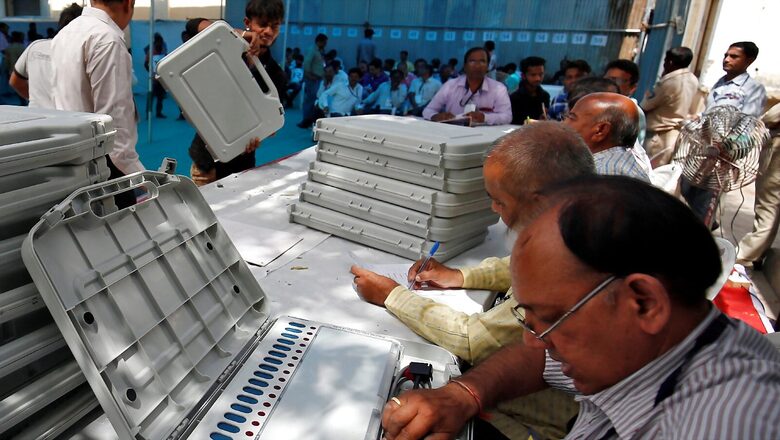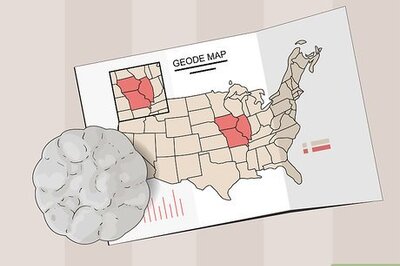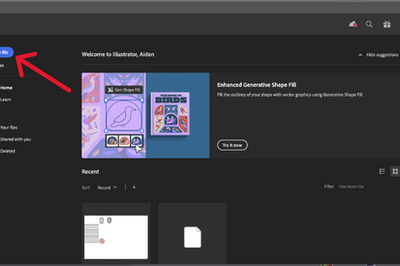
views
As Uttar Pradesh gears up for polling in 59 constituencies on Sunday in the third round of the ongoing seven-phase assembly elections, the focus is back on the traditional caste fault lines. Unlike in the first two phases across western UP and Rohilkhand that were largely defined along the Muslim-Jat phenomenon, the areas going to the polls on February 20 are diverse in their demographic realities. In 2017, the ruling Bharatiya Janata Party swept the region by winning 50 seats. The saffron outfit’s new caste consolidation has demolished the Samajwadi Party in the core Yadav land, swept away the Bahujan Samaj Party in Bundelkhand and had dominated the elections in the urban stronghold of Kanpur region.
In an election that is being seen as a bipolar contest between the BJP and the SP, it will be interesting to see if the ruling party’s “new Mandal politics” still calls the shots or it has been breached by Akhilesh Yadav’s claimed “new Samajwadi Party”.
A lot will depend on the voting pattern of the non-Yadav other backward classes (OBCs) often referred to as the MBCs (most backward classes). So, the Lodh OBC voting pattern in the constituencies of Etah and Kasganj to that of the Maurya, Kushwaha, Shakyas and Sainis in the traditional Yadav land of Firozabad, Mainpuri, Etawah, Auraiya and Kanpur Dehat will be crucial.
The non-Yadav OBC and the Dalits will also be the big deciding factor in the five districts of Jalaun, Hamirpur, Mahoba, Jhansi and Lalitpur in Bundelkhand. In all, 13 out of 19 seats of Bundelkhand will have voting in phase 3. Four seats of Banda and two in Chitrakoot will go to the polls in phases four and five respectively.
In the districts of Kannauj, Farukhabad and Kanpur, the BJP will hope to continue with its hold depending upon the traditional upper castes and the MBC and the most Dalit factor. The region will however be a test for the so-called “Brahmin factor”, given the allegations of “Brahmin discrimination” under the Yogi Adityanath rule. Interestingly, Vikas Dubey, the gangster who killed nine policemen, was from Kanpur. Dubey’s subsequent encounter death had seen a lot of politics playing out.
The assembly segments going to the polls in this phase are Hathras (SC), Sadabad, Sikandra Rao, Tundla (SC), Jasrana, Firozabad, Shikohabad, Sirsaganj, Kasganj, Amopur, Patiali, Aliganj, Etah, Marhara, Jalesar (SC), Mainpuri, Bhogaon, Kishni (SC), Karhal, Kayamganj (SC), Amritpur, Farrukhabad, Bhojpur, Chhibramau, Tirwa, Kannauj (SC), Jaswantnagar, Etawah, Bharthana (SC), Bidhuna, Dibiyapur, Auraiya (SC), Rasulabad (SC), Akbarpur-Rania, Sikandra, Bhognipur, Bilhaur (SC), Bithoor, Kalyanpur, Govindnagar, Sisamau, Aryanagar, Kidwai Nagar, Kanpur Cantt, Maharajpur, Ghatampur (SC), Madhaugarh, (220) Kalpi, Orai (SC), Babina, Jhansi Nagar, Mauranipur (SC), Garoutha, Lalitpur, Mehrauni (SC), Hamirpur, Rath (SC), Mahoba and Charkhari.
Double-edged ‘Yadav factor’
The campaigning for phase 3 had seen increasing emphasis on two fronts by the BJP. One, the law and order situation and the alleged lawlessness associated with the Samajwadi Party rule, which by default also builds the perception of domination of the Yadav caste, which undeniably and firmly stands with Akhilesh Yadav. The second big emphasis of the BJP had been on the implementation of the welfare schemes and the development work done under Yogi rule.
The “double-engine government” growth phenomenon, about which both Prime Minister Narendra Modi and UP chief minister Yogi Adityanath had been aggressively talking also converges on the very crucial new beneficiary class or the “labharthies”, a group of economically deprived and the poor who mostly come from the MBC and the Dalit subcastes.
In this region of Bundelkhand and central UP, that has often been seen as lagging behind on development and prosperity, the “labharthies” and the big development focus can therefore continue to be a game changer for the BJP. The party clearly aims for the continued support of the non-Yadav OBCs and the Dalits because of twin factors of anti- Yadavism and also the welfarism and development.
No doubt the alleged attack on union minister SPS Baghel, the party’s lower-caste candidate in Karhal, and SP chief Akhilesh Yadav’s aggression against the police in his speech in Kannauj, have been strongly taken up by the BJP as proof of the lawlessness associated with the opposition party.
Has Akhilesh moved beyond the M-Y formula?
In the election that is also being watched for the new moves being made by the Samajwadi Party, the acid test of its claimed new social engineering will be in phase 3. In polling of the earlier two phases, Jat support for the alliance has been largely due to the Rashtriya Lok Dal (RLD) impact. Barring a few constituencies out of 113 in the first two phases, the Yadav factor had been non-significant on the others.
But that is not the case now. For example in the regions of Kasganj and Etah that go to the polls in phase 3, the OBC population has an equally strong presence of both the Lodh and the Yadav voters. Former UP CM and once BJP’s Hindutva and backward caste mascot, the late Kalyan Singh, was from this region. A lot will be decided by how Lodh voters respond. Will they continue to support the BJP or will Akhilesh’s claimed new SP make an impact?
In Bundelkhand, from Mahoba, Hamirpur to Jhansi and Lalitpur, the region that has never been that fertile for the SP, its challenge will be winning the strong chunk of MBCs in this belt. Akhilesh had therefore been hitting out at the Yogi government for what he calls sheer neglect of Bundelkhand and the alarming crises of stray cattle and damage to crops that has been faced by the farmers. It is also the area where the BSP can make the fight interesting on a number of seats.
The Samajwadi Party will surely hope to give its best in the Yadav heartland from Firozabad to Etawah, Mainpuri and Auraiya. Akhilesh Yadav is himself a candidate from Karhal in Mainpuri. The districts here have a decisive presence of Yadavs, but any counter-polarisation can surely have an impact. It is a challenge that Akhilesh needs to navigate.
The SP also has a tough challenge in 20 constituencies spanning across Kanpur Dehat, Kanpur, Kannauj and Farrukhabad. In 2017, the BJP won 16 of them. The SP had won Sisamau and Aryangar in Kanpur and Kannauj reserved constituencies. One seat of Kanpur Cantt was won by the Congress. This time, the BJP hopes to win the Kannauj seat by fielding former police commissioner Aseem Arun.
Read all the Latest Politics News and Breaking News here



















Comments
0 comment